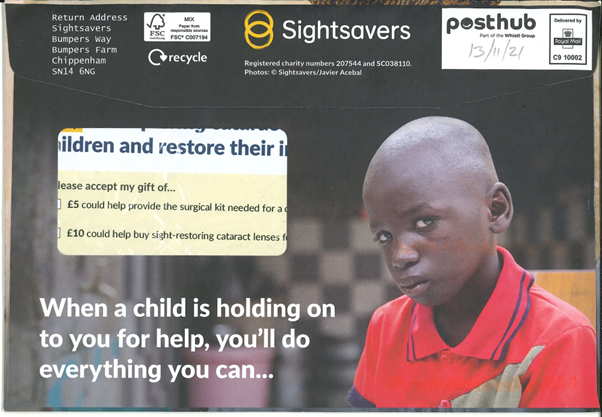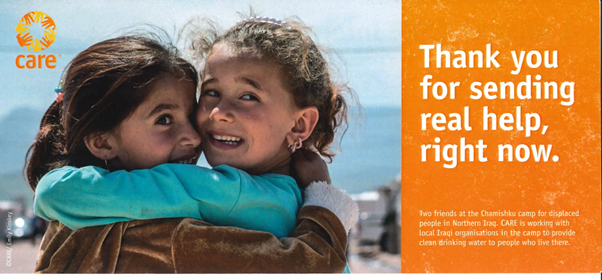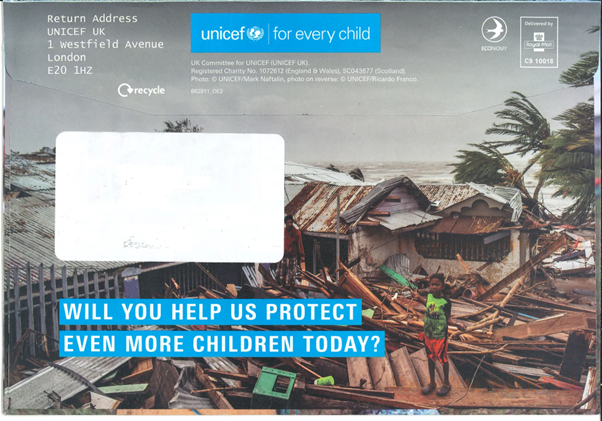Charity representations of distant ‘others’ in direct mailouts: time for a rethink?

In an era of shrinking aid budgets, economic instability and intense competition for donor attention, charities are under significant pressure to distinguish themselves and cut-through an increasingly oversaturated market.
In this context, how they communicate their work is often more a matter of survival than style, and has become central to securing funding and remaining operational. This has led organisations to adopt increasingly innovative – and sometimes controversial – strategies, many of which have come under intense recent scrutiny.
As studies have shown, the landscape of charity communications has undergone significant shifts over the years, in response to critiques, evolving public attitudes and global events. More organisations have begun rethinking their approach and established policies and guidelines to improve storytelling processes and outcomes. This includes large INGOs like Oxfam and Save the Children, and international development networks like BOND and the UK’s Disasters Emergency Committee.
Our latest report, Charity Representations of Distant Others: An Analysis of UK Charity Visual Communications in Direct Mail Campaigns, provides valuable insights into evolving strategies in charity communications, identifying and contesting trends and sparking new thoughts for consideration. In this year-long study (March 2021 to March 2022), we examined 589 images across 31 mailouts from nine prominent UK-based charities. Our aim was to understand how charities visually communicate their causes and whether the imagery used in charity direct mail differs from what is typically seen in charities’ newspaper ads.

Charity direct mail representation: what we found
Direct mail campaigns offer charities an excellent opportunity to engage potential individual givers with more nuanced and ethical storytelling. But are they making enough of this opportunity?
Here’s some of what we found:
- An overrepresentation of Africa
Around half (51%) of the images analysed featured countries in Africa. However, the UK was the most represented country (12.4%).
Despite working in multiple regions, many charities continue to overrepresent Africa – a trend that raises questions about narrative authenticity. Our research shows that for some charities, the high volume of African imagery didn’t necessarily align with the number of African countries they work in.
- This raises critical questions about whether charities are prioritising images that evoke a stronger emotional response from donors, potentially at the expense of a more accurate and diverse representation of global poverty. Could this overemphasis on Africa inadvertently marginalise other areas where significant work is being done, like Asia or Latin America? A focus on women and children
Around 60% of images (59.2%) depicted women, children or women and children from the Global South.
Some of the direct mail analysed did feature characters not typically seen in newspaper ads, such as children from the Developing World, and fathers with children. However, with only 9 out of 589 images featuring the father-and-children dynamic, there is still plenty of room for growth in representing more diverse family structures.
- Health-related imagery dominates
Health-related imagery accounted for a third (34%) of all images.
The importance of health interventions is undeniable. But does this focus inadvertently overshadow other critical aspects of development? For example, education is strikingly underrepresented, featuring in only 2.5% of images, despite children being significantly depicted in direct mailouts.
Why examining visual storytelling in direct mailouts matters

As communication strategies evolves within the sector, especially with discussions around the potential of AI-generated content, the principles of ethical storytelling become even more important.
These findings invite us to examine the visual storytelling practices within the charity sector. Are the images we use truly fostering an informed and engaged donor public with a nuanced understanding of global inequalities? Or are they, perhaps unintentionally, reinforcing simplistic narratives to elicit immediate emotional responses and donations?
Expanding the visual narrative to encompass a broader spectrum of development areas can offer donors a more comprehensive understanding of the many challenges and interventions necessary for sustainable progress. Misrepresentation, on the other hand, can erode trust. It can skew donor understanding towards short-term relief efforts, which potentially contributes to disillusionment when long-term systemic changes are not immediately apparent. Misrepresentation can fuel donor fatigue and, ultimately, undermine the very mission of international development.
This research offers valuable insights into the current landscape of charity direct-mail marketing. While progress is evident in areas like reduced use of ‘pitiful’ imagery and increased photographer attribution, the persistent patterns in geographic and subject-matter representation highlight the ongoing need for critical self-reflection within the sector.
Download the full report, Charity Representations of Distant Others: An Analysis of UK Charity Visual Communications in Direct Mail Campaigns, to further explore these findings. You can also visit www.charity-advertising.co.uk to view all the direct mail images collected for the study.
Category
News & views
